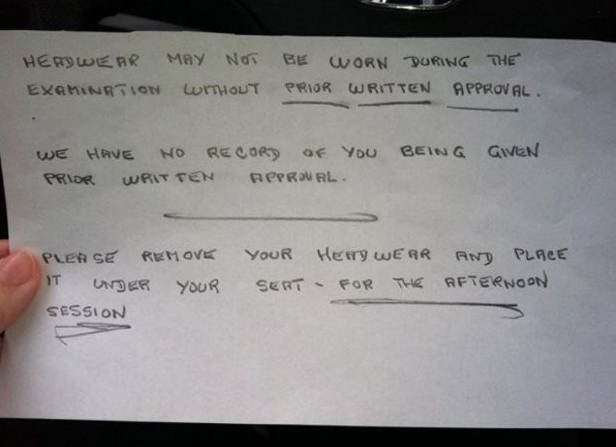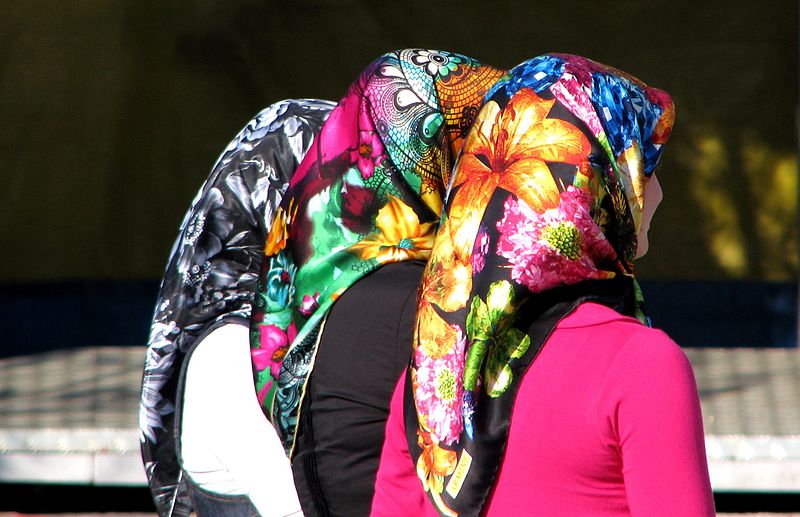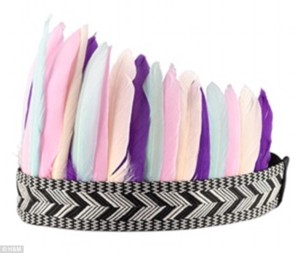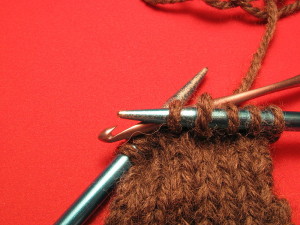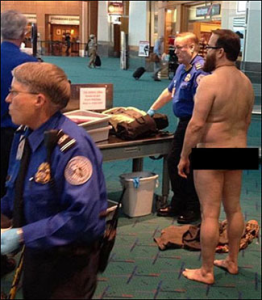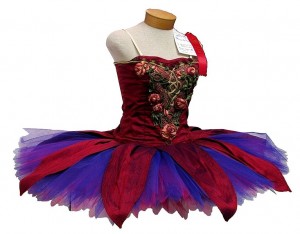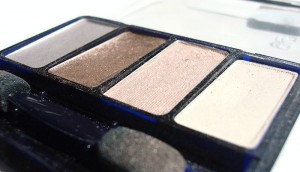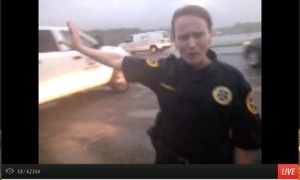After a proctor asked a test-taker to remove her hijab during the bar exam, the Massachusetts Board of Bar Examiners changed its policy regarding its approval process for headwear.
As reported, law graduate Iman Abdulrazzak received approval before the bar exam to wear her hijab during the test, as required by the exam’s security policy in July.
However, in the morning session of the 16-hour test, a proctor passed Iman this handwritten note:
Iman told reporters the interruption caused her considerable confusion and frustration, though she was able to receive official approval (again) during the lunch break.
Various news sources reported the incident, and a plethora of commentators chastised the board over the discriminating nature of the policy. The exam board then revised the policy, which now allows headwear worn during the exam for “religious reasons or reasons of medical necessity only.”
In addition to apologizing to Iman, the Executive Director of the exam board told reporters that “the decision to change the policy was an easy one to make.”
But if it was “an easy one to make,” why did it take this outrageous incident to elicit change? After all, requiring an anxious test-taker to jump through an approval process seems constitutionally questionable under the First Amendment’s right to free exercise of religion. With any luck the issue is resolved, at least in Massachusetts.
[image via]

